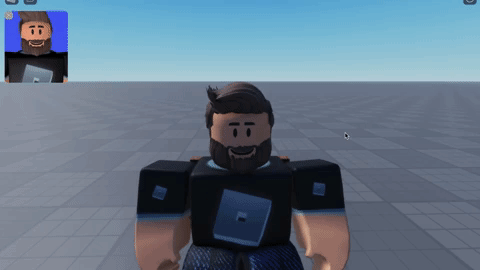Roblox, an online game platform on which people can either play games or create them, has 52.2 million users per day. The company’s initial demographic was minors, but in recent years it has become a popular destination for teens and young adults, and over half its users are now over 13. The rich, varied virtual worlds created on the site have been considered a precursor to what we might see and experience in the metaverse, with opportunities for connection with other people and personalized avatars that players can use across games.
The update is similar to the Apple iPhone’s Bitmoji, which uses depth sensing to measure and track head and facial movements. Previous avatars on Roblox have had expressions, but Bjorn Book-Larsson, vice president of product and avatars at Roblox, described them as “two-dimensional.”

ROBLOX
The Roblox update would mean users could smile, wink, or scrunch their forehead, and their avatar would mimic them in real time. Eyes couldcan scan, heads could shake, and eyebrows and ears could wiggle with the same results. And soon, Roblox says, users will be able to speak directly with other avatars as in other multiplayer video games. In short, the changes might blend our real-world human experience with that of the metaverse and make avatars more like ourselves—for better or worse.
Until early 2023, these updates will be kept within a tight circle of users and creators, which Book-Larsson says is meant to maintain “trust and safety.” “We expect the unexpected,” he says. Part of that lag is so that Roblox’s safety team can make sure expressions are safely deployed within its huge demographic of minor users. For example, Book-Larsson says, one option for a facial expression—sticking your tongue out—was scrapped because of its possible misuse as a sexual overture.
